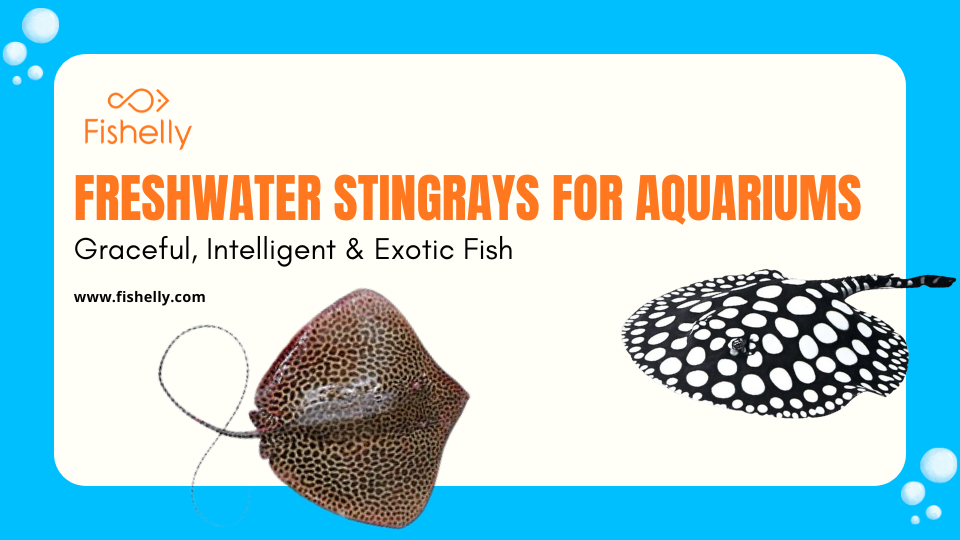Freshwater Stingrays for Aquariums – Graceful, Intelligent & Exotic Fish
Journey into the world of freshwater stingrays intelligent, gentle creatures that glide like river spirits. Discover their origins, patterns, and the hidden beauty that turns each stingray into a living story beneath the water’s surface.
Table of Contents
- Giant Freshwater Stingray
- Motoro Stingray
- Albino Snow Pearl Stingray
- Itaituba Stingray
- Flower Stingray
- Tiger River Stingray
- Black Diamond Stingray
- P14 Polka Dot Stingray
- Ocellate River Stingray
- Faq
- Conclusion
Stingrays are all the rage when it comes to freshwater fish: they are intelligent and graceful, gaining admiration through their strange discoidal shapes. They originate primarily from the largest river systems of South America, and these bottom dwelling beauties add an exotic touch to aquariums all over the world. Their curious nature, graceful skim, and interesting pattern transform them into moving art pieces for any fish lover.
Let us have a closer look at some of the more popular freshwater stingrays, each of which has its unique beauty and personality.
Giant Freshwater Stingray
The Giant Freshwater Stingray (Urogymnus polylepis) is a true river giant one of the largest freshwater fish on the planet. It is native to Southeastern Asia, more specifically the Mekong and Chao Phraya Rivers, and it can weigh over 600 kg (1,300 lbs) and reach more than 4 m in width.
In spite of being one of the most terrifying freshwater fishes, the Giant Freshwater Stingray is an extremely gentle and shy beast. Sandy or muddy riverbeds where the head can be buried leaving only the eyes visible to view are often chosen. The stingrays mainly eat small fish, crustaceans, and worms.
The species has been classified as endangered due to habitat destruction and overfishing, but conservation measures are still being implemented to preserve these gigantic freshwater beauties.
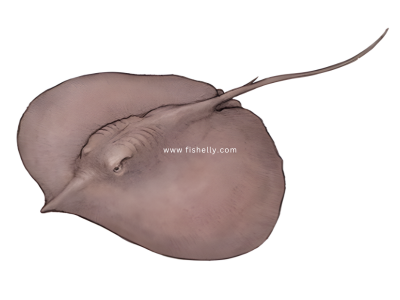
Motoro Stingray
The Motoro Stingray (Potamotrygon motoro) is among the most popular and adaptable freshwater stingrays kept in home aquariums. The species is indigenous to the Amazon, Orinoco, and Paraná River Basins and flourishes in slow moving waters with soft, sandy substrates.
Notably, the stingray is easily recognized by its rich brown color mottled with brilliant orange or golden spots of varying intensity and pattern. They are intelligent and interactive, often displaying a great capacity to recognize their owners.
With the proper care, a spacious tank set to warm waters (26–30°C), good filtration, and a diet mostly based on shrimp, worms, and small fish, these stingrays can live to be about 15–20 years old in captivity.

Albino Snow Pearl Stingray
One of the rarest and most beautiful among the stingray family, the Albino Snow Pearl Stingray has creamy white coloration that glows beautifully under the aquarium lights. It is different from the rest because it has no pigmentation; therefore it is very sensitive to water quality and light.
This color variant is the outcome of long periods of selective breeding of the Pearl Stingray (Potamotrygon leopoldi) and, thus, requires crystal clear water, stable temperature, and a lowstress environment. This species is rare and rather delicate in nature, thus making it better suited to be kept by advanced aquarists.
The Snow Pearl Stingray symbolizes purity and elegance, a living jewel that adds unmatched beauty to luxury aquariums.
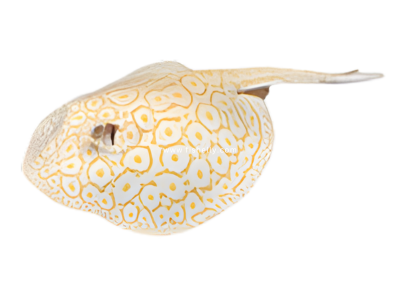
Itaituba Stingray
The Itaituba Stingray (Potamotrygon itaituba), which originates from the Tapajos River in Brazil, is a stunner with its black velvety body decorated by brilliant white or yellow spots. The gorgeous contrast gives an irresistibly "starry night" appearance for aquarists.
Itaitubas are very active swimmers, gliding closely along the tanks' bottom, forever searching for new sights to see. They require soft, sandy substrates since coarse gravel may injure their delicate undersides.
Wildly, these stingrays feed on insects, worms, and crustaceans, while in captivity, they thrive on bloodworms, prawns, and sinking pellets.
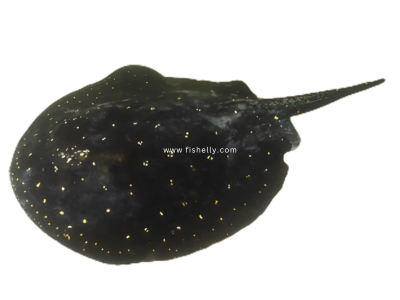
Flower Stingray
As the name suggests, the Flower Stingray (Potamotrygon sp.) is characterized by an intricate flowerlike pattern that almost looks hand painted by nature. It is found in different South American river systems and is a living mosaic of color and symmetries.
Their delicate petallike markings differ from individual to individual, making each an exceptional piece of nature´s artwork. Flower Stingrays are generally calm, intelligent, and observant, usually resting half buried in sand.
For aquarium keepers, maintaining stable pH levels (6.57.5), space, and clean water is key to their long term health.
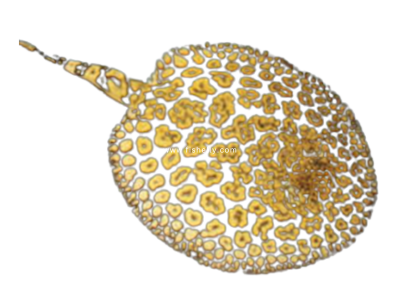
Tiger River Stingray
The tiger river stingray derives its name from its conspicuous striped or banded pattern resembling a tiger's coat. This species originates from the Peruvian and Brazilian tributaries of the Amazon and boasts not only an impressive look but also an impressive speed and grace.
These stingrays are powerful swimmers and agile hunters, frequently using their flattened bodies to ambush small prey concealed in the sandy substrate. Big aquariums with good oxygenation and feeding schedules regulated are due conditions for their existence.
Pattern variations from light bronze to dark brown with golden stripes make them maybe one of the most photogenic species in aquaristics.
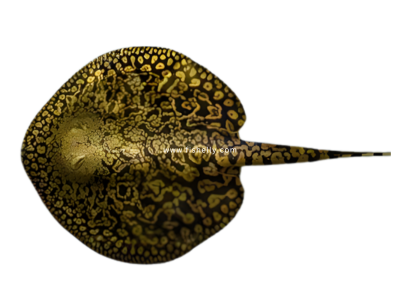
Black Diamond Stingray
The freshwater Black Diamond is among the most luring and cherished in all, standing out for its jet black body adorned with white or golden glittering dots. This stunning contrasting gives it a designer like look that many collectors clamour to possess.
Hailing from the Xingu River in Brazil, Black Diamonds demand very pristine water, ample swimming space, and proper care with feeding. It is water conditions sensitive making it suitable only for advanced aquarists. The Black Diamond is a living statement piece symbolizing prestige and perfection; the real "crown jewel" of the freshwater stingrays.
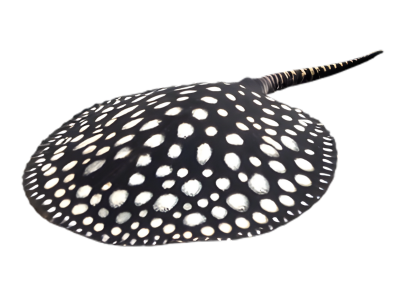
P14 Polka Dot Stingray
The P14 Polka Dot Stingray (Potamotrygon leopoldi var.) is yet another dazzling species from the Xingu River. It carries chunksize white spots on dark black or brown grounds, thus creating an elegant, highcontrast look.
With its smooth and fluent movements, this stingray glided like silk across the floor of the aquarium. Warm and slightly acidic water, alongwith fine sandy substrate are its most comfortable conditions.
Its playful character and interactive display have made it a favorite among the hobbyists that enjoy bonding with their aquatic companions.
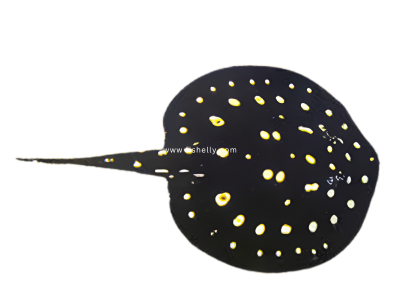
Reticulated Stingray
The Reticulated Stingray (Potamotrygon reticulatus) is one of the smaller, stockier species of stingrays. Thus it is suitable for a medium sized aquarium. Its intricate maze of connected lines has formed the pattern of a net over the disc and has a pattern that alters gradually with maturation.
This species comes from South American tributaries it has prefer clean and well oxygenated water with medium flow. It is peaceful and fact that often manifests as hiding under the substrate at daytime.
Compared to larger species, the Reticulated Stingray is truly easy to care for, making it a great beginner stingray choice.
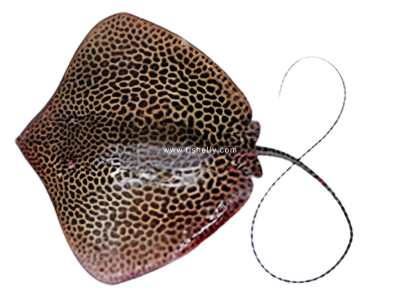
Ocellate River Stingray
The Ocellate River Stingray (Potamotrygon motoro var. ocellata) is presented with a beautiful gold and several adorned with ring "eye" spots, which can be found on their ventral side discs. Such marks in the wild serve as camouflage to predators.
The above species is found in the waters of the Paraná and Amazon rivers. Furthermore, they are the strongest species that do best in captivity. Its brilliant color and inquisitive character draw attention in virtually any aquarium. Feeding it live or frozen food and keeping excellent water quality will help maintain vivid coloration and health.
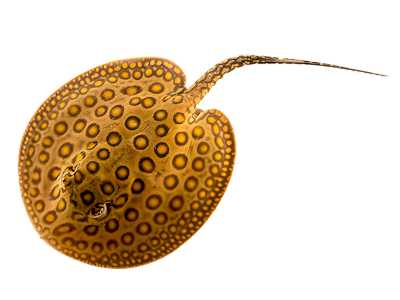
Faq
1. Are freshwater stingrays suitable for home aquariums?
Yes, many freshwater stingrays like the Motoro, Reticulated, and P14 Polka Dot Stingrays are suitable for large, well maintained home aquariums. However, they require plenty of space, clean water, and a soft sandy substrate to prevent injury.
2. Which is the largest freshwater stingray species?
The Giant Freshwater Stingray (Urogymnus polylepis) is the largest species, capable of reaching up to 4 meters in width and weighing over 600 kilograms. It’s mainly found in Southeast Asian rivers like the Mekong and Chao Phraya.
3. Are stingrays dangerous to keep as pets?
While stingrays have venomous barbs, they are not aggressive and rarely pose a threat if handled correctly. Most injuries occur accidentally, so aquarists should always use caution and avoid sudden movements around them.
4. What do freshwater stingrays eat?
They are carnivorous, feeding primarily on small fish, shrimp, worms, and crustaceans. In captivity, they can adapt to frozen or sinking pellets, though a varied diet is essential for health and coloration.
5. Which freshwater stingray is best for beginners?
The Reticulated Stingray (Potamotrygon reticulatus) is ideal for beginners. It’s smaller, hardy, and easier to maintain compared to more sensitive species like the Black Diamond or Snow Pearl Stingray.
6. How long do freshwater stingrays live in captivity?
With proper care, most species live between 15 to 20 years. Clean water, a proteinrich diet, and a spacious environment are key factors that influence their lifespan.
7. Why are some stingrays, like the Albino Snow Pearl, so rare?
The Albino Snow Pearl Stingray is a selectively bred color variant of the Pearl Stingray. Its white pigmentation and delicate nature make it rare, expensive, and suited only for experienced aquarists.
8. What water conditions do freshwater stingrays need?
They thrive in warm (26–30°C), slightly acidic to neutral water (pH 6.5 - 7.5) with excellent filtration. The water should always be crystal clear and oxygen rich, as stingrays are sensitive to poor water quality.
9. Do stingrays recognize their owners?
Yes! Many hobbyists report that species like the Motoro Stingray show interactive and intelligent behavior, even recognizing their keepers and responding to feeding routines.
10. Are freshwater stingrays endangered?
Some species, such as the Giant Freshwater Stingray, are endangered due to habitat loss and overfishing. Conservation efforts are underway to protect these gentle river giants.
11. Can stingrays be kept with other fish?
Yes, but with caution. They should be housed with nonaggressive, similarly sized fish. Avoid tankmates that nip fins or compete for food, as stingrays are bottom dwellers and easily stressed.
12. Why are stingrays called “living art”?
Their unique patterns, graceful gliding, and vibrant contrasts make them appear like moving artworks. Each species - from the Flower Stingray’s natural mosaic to the Black Diamond’s starry elegance - is a masterpiece of nature.
Conclusion
Freshwater rays are graceful, intelligent, and interesting creatures that give very nice elegance to any aquarium. From the Giant Freshwater Stingray to the Black Diamond, each species represents a thing of nature's artistry and adaptability. High standards such as clean, warm environments with a soft sandy bottom and protein rich feeding will ensure the brilliance with which these animals thrive. They inspire genuine aquarists with delicate movements and long hours of companionship.
